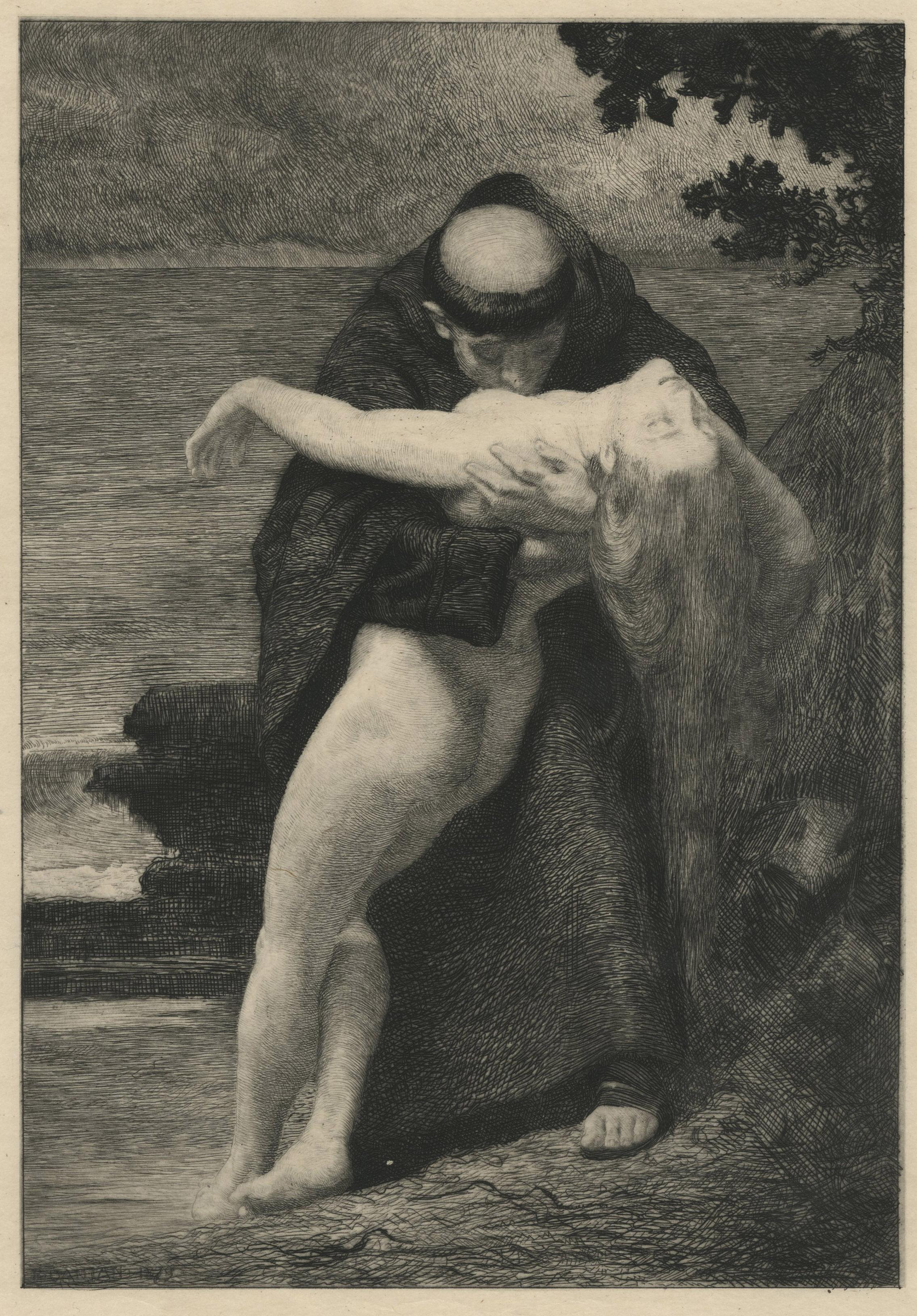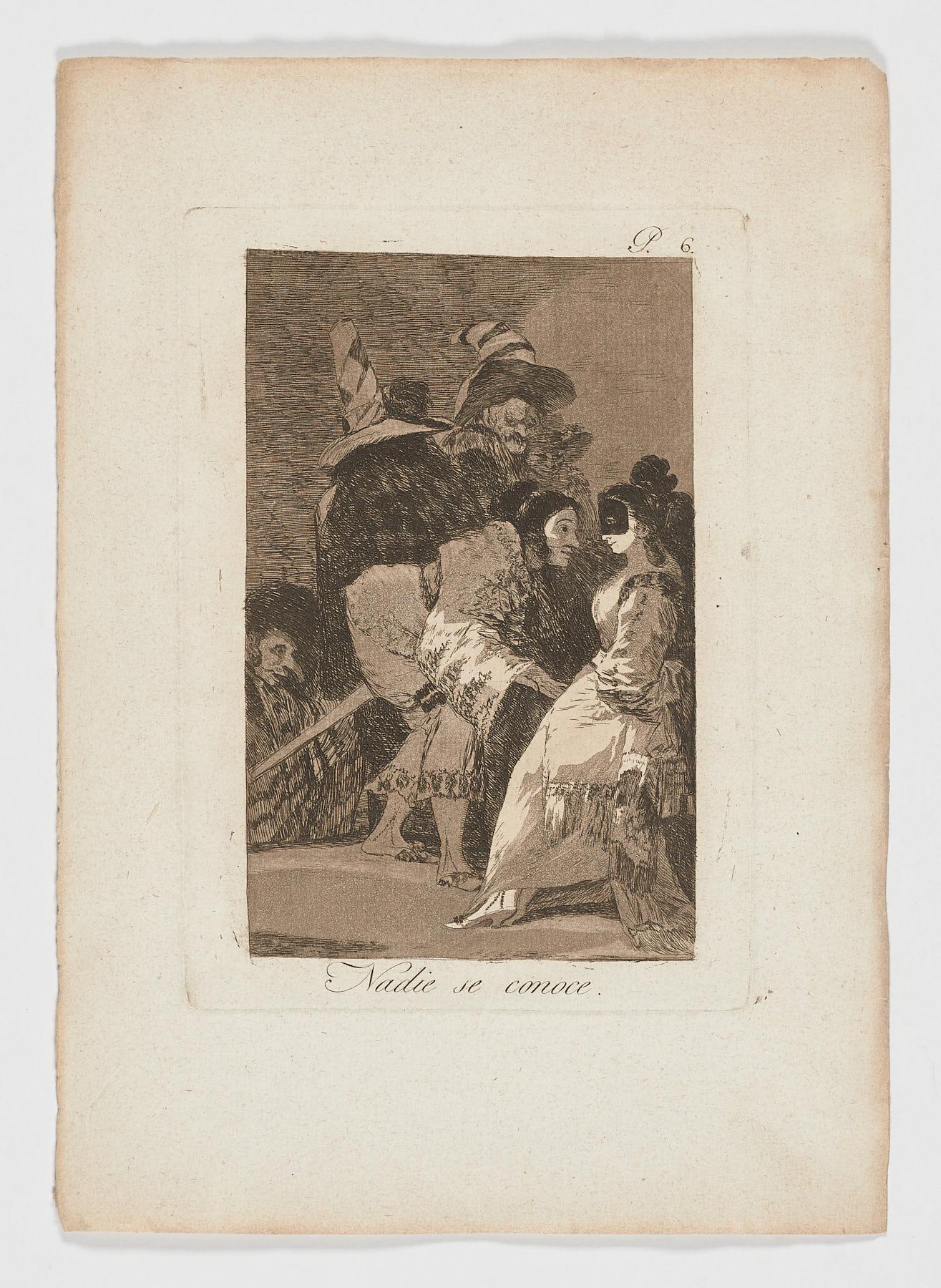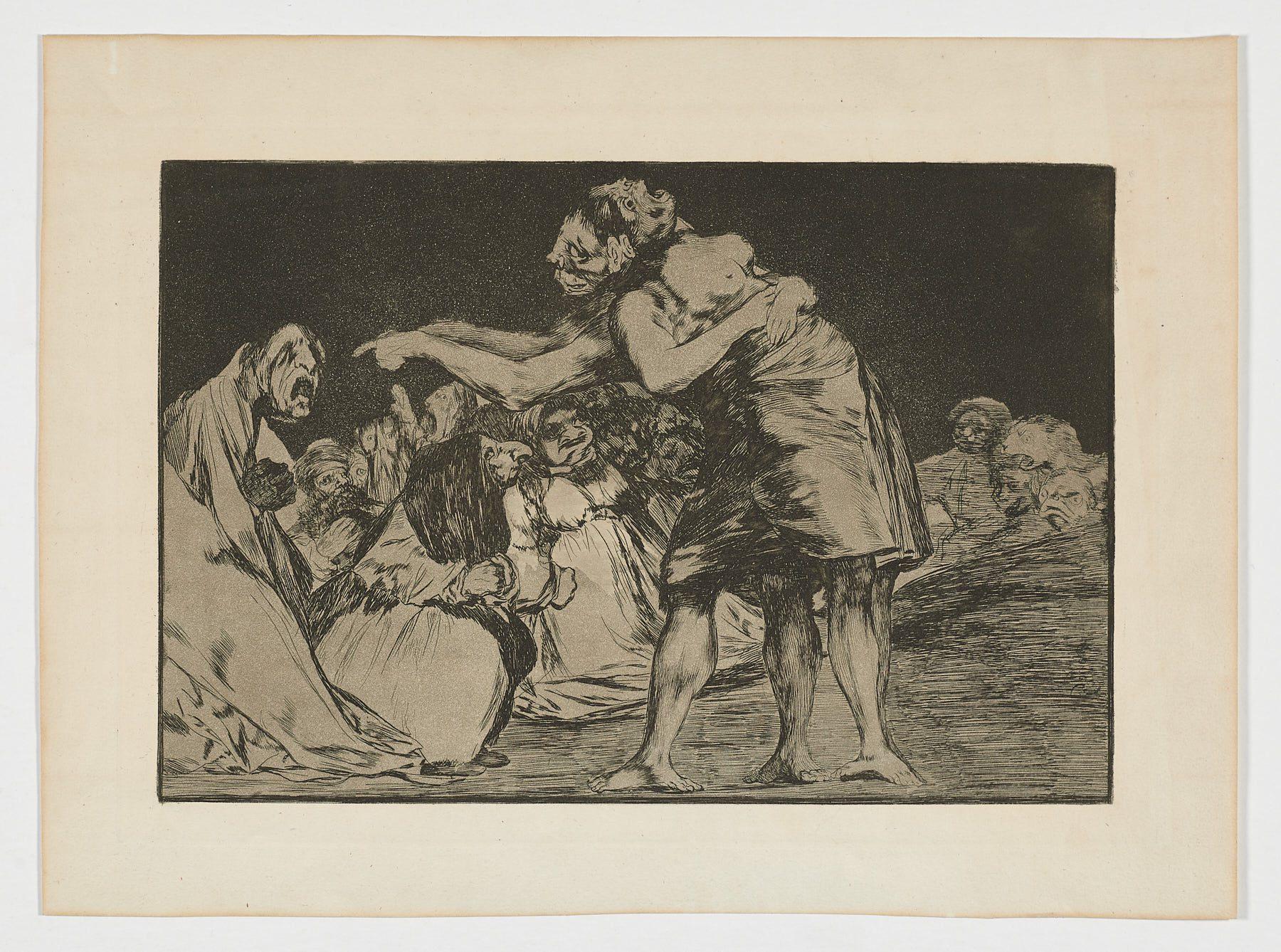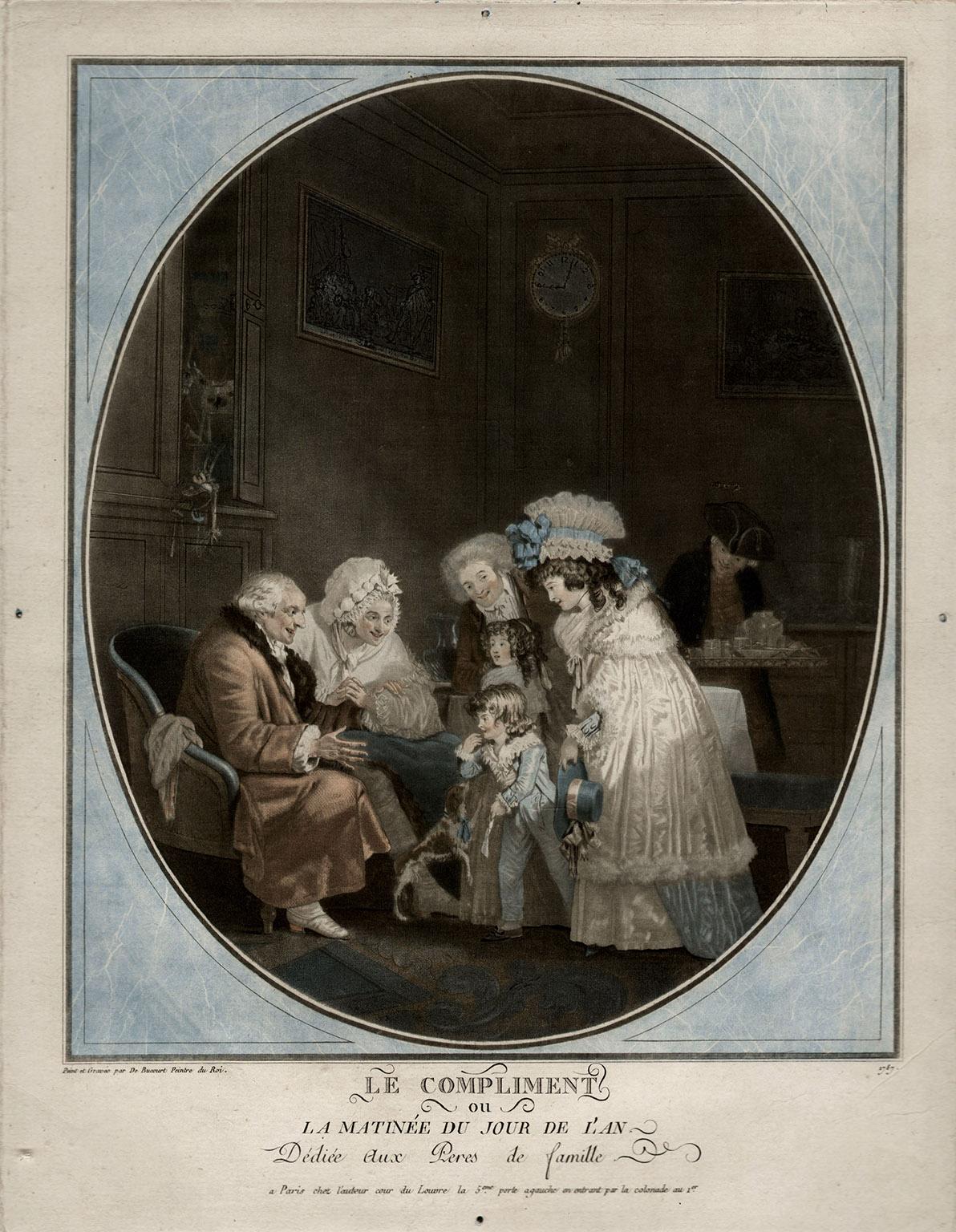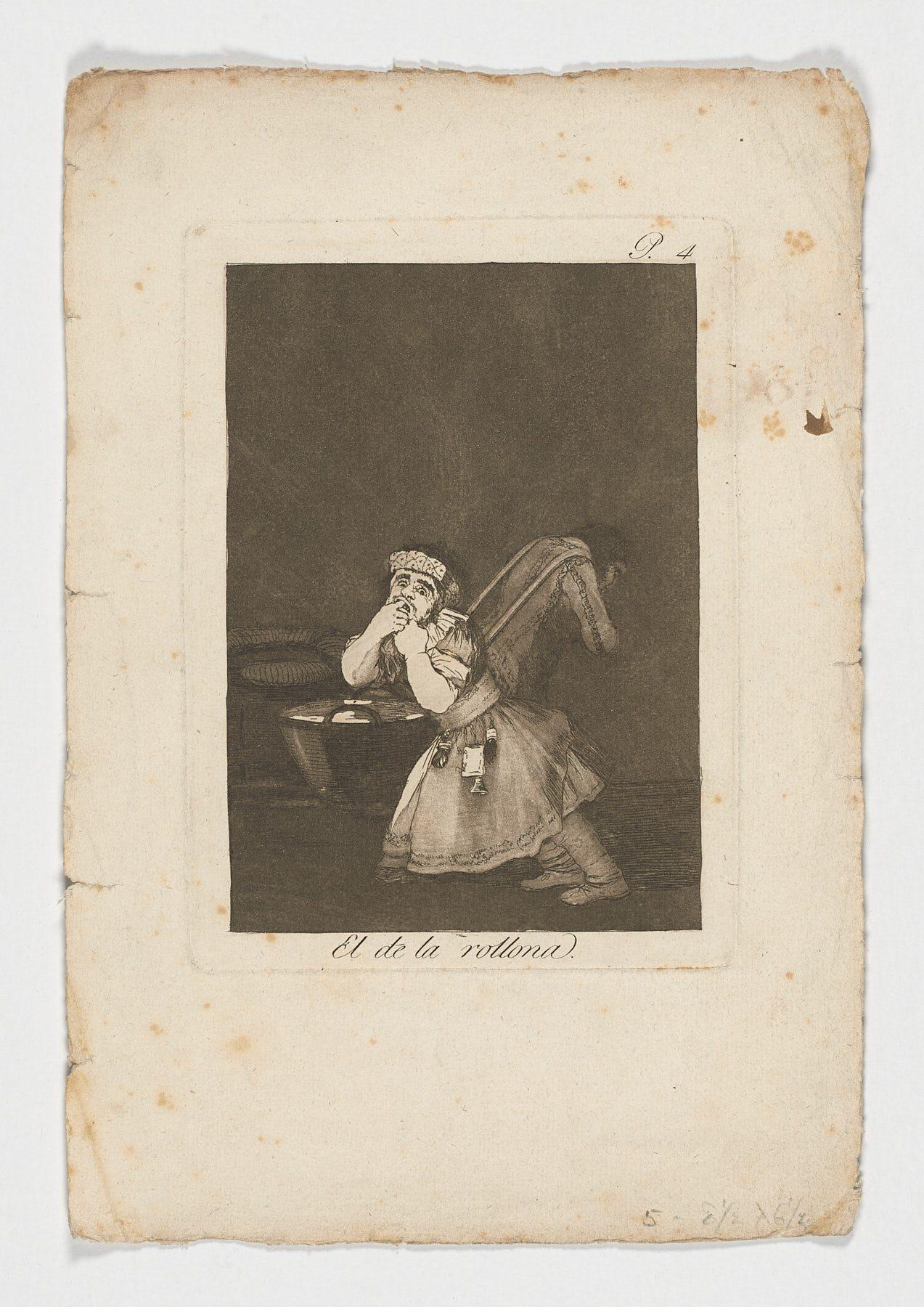Items Similar to Early 19th century multiple etchings figures nude woman military man
Want more images or videos?
Request additional images or videos from the seller
1 of 12
Eugène DelacroixEarly 19th century multiple etchings figures nude woman military man 1833
1833
About the Item
This piece is a framed set of two original etchings by Eugene Delacroix. Under each etching is the original title in French, "Un Homme d'Arme du Temps de Francois" and "Etude de Femme Vue de Dos". The top etching is signed and monogrammed in the plate by Delacroix and the bottom etching has Delacroix's monogram in the upper right corner.
TOP: 4 1/4" x 2 3/4" art
BOTTOM: 4 1/2" x 6 1/2" art
21 3/4" x 14 3/4" frame
Ferdinand Victor Eugène Delacroix (April 26, 1798-August 13, 1863) was the most important of the French Romantic painters. Delacroix's use of expressive brushstrokes and his study of the optical effects of colour profoundly shaped the work of the Impressionists, while his passion for the exotic inspired the artists of the Symbolist movement. A fine lithographer, Delacroix illustrated various works of William Shakespeare, the Scottish writer Sir Walter Scott, and the German writer Johann Wolfgang von Goethe.
In contrast to the Neoclassical perfectionism of his chief rival Ingres, Delacroix took for his inspiration the art of Rubens and painters of the Venetian Renaissance, with an attendant emphasis on color and movement rather than clarity of outline and carefully modeled form. Dramatic and romantic content characterized the central themes of his maturity, and led him not to the classical models of Greek and Roman art, but to travel in North Africa, in search of the exotic. Friend and spiritual heir to Théodore Géricault, Delacroix was also inspired by Byron, with whom he shared a strong identification with the "forces of the sublime", of nature in often violent action.
However, Delacroix was given neither to sentimentality nor bombast, and his Romanticism was that of an individualist. In the words of Baudelaire, "Delacroix was passionately in love with passion, but coldly determined to express passion as clearly as possible."
Delacroix's most influential work came in 1830 with the painting Liberty Leading the People , which for choice of subject and technique highlights the differences between the romantic approach and the neoclassical style. Probably Delacroix's best known painting, it is an unforgettable image of Parisians, having taken up arms, marching forward under the banner of the tricolour representing liberty and freedom; Delacroix was inspired by contemporary events to invoke the romantic image of the spirit of liberty. The soldiers lying dead in the foreground offer poignant counterpoint to the symbolic female figure, who is illuminated triumphantly, as if in a spotlight.
Eugène Delacroix died in Paris, France and was buried there in the Père Lachaise Cemetery.
- Creator:Eugène Delacroix (1798-1863, French)
- Creation Year:1833
- Dimensions:Height: 21.75 in (55.25 cm)Width: 14.75 in (37.47 cm)
- Medium:
- Movement & Style:
- Period:
- Condition:
- Gallery Location:Milwaukee, WI
- Reference Number:
Eugène Delacroix
Ferdinand Victor Eugène Delacroix (French: 26 April 1798 – 13 August 1863) was a French Romantic artist regarded from the outset of his career as the leader of the French Romantic school. In contrast to the Neoclassical perfectionism of his chief rival Ingres, Delacroix took for his inspiration the art of Rubens and painters of the Venetian Renaissance, with an attendant emphasis on colour and movement rather than clarity of outline and carefully modelled form. Dramatic and romantic content characterized the central themes of his maturity, and led him not to the classical models of Greek and Roman art, but to travel in North Africa, in search of the exotic. Friend and spiritual heir to Théodore Géricault, Delacroix was also inspired by Lord Byron, with whom he shared a strong identification with the "forces of the sublime", of nature in often violent action. However, Delacroix was given to neither sentimentality nor bombast, and his Romanticism was that of an individualist. In the words of Baudelaire, "Delacroix was passionately in love with passion, but coldly determined to express passion as clearly as possible."Together with Ingres, Delacroix is considered one of the last old Masters of painting and is one of the few who was ever photographed. As a painter and muralist, Delacroix's use of expressive brushstrokes and his study of the optical effects of colour profoundly shaped the work of the Impressionists, while his passion for the exotic inspired the artists of the Symbolist movement. A fine lithographer, Delacroix illustrated various works of William Shakespeare, the Scottish author Walter Scott, and the German author Johann Wolfgang von Goethe.
About the Seller
4.9
Platinum Seller
These expertly vetted sellers are 1stDibs' most experienced sellers and are rated highest by our customers.
Established in 1966
1stDibs seller since 2017
393 sales on 1stDibs
Typical response time: 2 hours
- ShippingRetrieving quote...Ships From: Milwaukee, WI
- Return PolicyA return for this item may be initiated within 14 days of delivery.
More From This SellerView All
- 19th century color lithograph caricature female subject satirical figurativeBy Honoré DaumierLocated in Milwaukee, WI"Histoire Ancienne (Plate No. 49), La Mort de Sapho 2nd State (rare) Delteil #973" is a hand-colored lithograph by Honore Daumier. The artist signed the image lower right. It depicts...Category
1840s Romantic Figurative Prints
MaterialsLithograph
- 19th century lithograph caricature black and white satirical figurative printBy Honoré DaumierLocated in Milwaukee, WI'Un fiacre a l'heure... (Emotions Parisiennes)' is an excellent example of the satirical caricatures produced by Honoré Daumier. The title, which translat...Category
1830s Romantic Figurative Prints
MaterialsLithograph
- 'Lieutenant Crovers Despatch – Return of Governor Stevens to Fort Benton'By John Mix StanleyLocated in Milwaukee, WIIn the mid-nineteenth century, the United States government set out to survey and document its newly acquired lands and territories west of the Mississippi. The goals of these surveys were manifold: to produce topographical maps, to document flora and fauna, and to document natural resources to build the emerging US economy. These surveys, and the images from them, also functioned to build the new sense of American identity with the landscape, condensing vistas into the 'picturesque' tradition of European image making. Thus, the entire span of US territory could be seen as a single, cohesive whole. This lithograph comes from one of six surveys commissioned by the Army's Topographic Bureau in 1853, which sought to find the best route to construct a transcontinental railroad. The result was a thirteen-volume report including maps, lithographs, and technical data entitled 'Explorations and Surveys to ascertain the most practicable and economical route for a Railroad from the Mississippi river to the Pacific Ocean.' In particular, the print comes from the northern survey, commanded by Isaac Stevens, which explored the regions between the 47th and 49th parallels. 5.75 x 8.75 inches, image 6.5 x 9.25 inches, stone 17 x 20 inches, frame Artist 'Stanley Del.' lower left Entitled 'Lieutenant Crovers Despatch – Return of Governor Stevens to Fort Benton' lower center margin Publisher 'Sarony, Major & Knapp. Lith.s 449 Broadway N.Y.' lower right Inscribed 'U.S.P.R.R. EXP. & SURVEYS — 47th & 49th PARALLELS' upper left Inscribed 'GENERAL REPORT — PLATE XXXVII' upper right Framed to conservation standards using 100 percent rag matting with French accents; glazed with UV5 Plexiglas to inhibit fading; housed in a gold reverse ogee moulding. Print in overall good condition; some localized foxing and discoloration; minor surface abrasions to frame. John Mix Stanley...Category
1850s Romantic Landscape Prints
MaterialsLithograph
- 19th century color lithograph watercolor landscape figurative animal printBy Nathaniel CurrierLocated in Milwaukee, WIThe present hand-colored lithograph presents the viewer with a hunting scene in a picturesque landscape. In the foreground, a man approaches two partridges as his two pointers prepare to flush them out. Beyond, a white fence draws our eyes to the homestead in the distance. Images like this one show how people in the United States were trying to identify themselves as a new nation in the North American landscape - as separate from their European counterparts but with similar similar and specific wildlife and magesties of nature. It also identifies hunting in this landscape as an American pastime. 9.25 x 12.5 inches, artwork 18.38 x 22 inches, frame Entitled bottom center "Partridge Shooting...Category
Mid-19th Century Romantic Figurative Prints
MaterialsWatercolor, Lithograph
- 'Victor's Camp - Hell Gate Ronde' original John Mix Stanley lithographBy John Mix StanleyLocated in Milwaukee, WIIn the mid-nineteenth century, the United States government set out to survey and document its newly acquired lands and territories west of the Mississippi. The goals of these surveys were manifold: to produce topographical maps, to document flora and fauna, and to document natural resources to build the emerging US economy. These surveys, and the images from them, also functioned to build the new sense of American identity with the landscape, condensing vistas into the 'picturesque' tradition of European image making. Thus, the entire span of US territory could be seen as a single, cohesive whole. This lithograph comes from one of six surveys commissioned by the Army's Topographic Bureau in 1853, which sought to find the best route to construct a transcontinental railroad. The result was a thirteen-volume report including maps, lithographs, and technical data entitled 'Explorations and Surveys to ascertain the most practicable and economical route for a Railroad from the Mississippi river to the Pacific Ocean.' In particular, the print comes from the northern survey, commanded by Isaac Stevens, which explored the regions between the 47th and 49th parallels. Stanley shows here the stop the Stanley Party made at the junction of the Bitterroot and Hell Gate, in present day Montana. While there, the Party met with the Flathead Chief by the name Victor, as is shown in the image. The figures and their encampment are dwarfed by the vast landscape around them, indicating the sublimity of these new American territories. 5.75 x 8.75 inches, image 6.5 x 9.25 inches, stone 17 x 20 inches, frame Artist 'Stanley Del.' lower left Entitled 'Victor's Camp - Hell Gate Ronde' lower center margin Publisher 'Sarony, Major & Knapp. Lith.s 449 Broadway N.Y.' lower right Inscribed 'U.S.P.R.R. EXP. & SURVEYS — 47th & 49th PARALLELS' upper left Inscribed 'GENERAL REPORT — PLATE XXXI' upper right Framed to conservation standards using 100 percent rag matting with French accents; glazed with UV5 Plexiglas to inhibit fading; housed in a gold reverse ogee moulding. Print in overall good condition; some localized foxing and discoloration; minor surface abrasions to frame. John Mix Stanley...Category
1850s Romantic Landscape Prints
MaterialsLithograph
- 'Scene on the Wabush' original engraving by Wellstood & Kirk PottawatomiLocated in Milwaukee, WI"Scene on the Wabash, and Potawattamie Indians" is an original hand-colored engraving, executed by Wellstood & Kirk after the original painting by George Winter. The image captures the kind of scene of the American landscape for which Winter is best known: among the lush trees and flowing rivers, Pottawatomi men, women and children relax from their travels, their horses tied...Category
1860s Romantic Landscape Prints
MaterialsPaper, Engraving, Pigment, Watercolor
You May Also Like
- Phrosine and MélidoreLocated in Fairlawn, OHPhrosine and Mélidore Etching, 1879 Signed in the polate lower left of image This etching is after the Dantan painting, a copy after the Pierre-Paul Prud’hom painting Published by Vve. A. Cadart, 56, Bard. Haussman, Paris A deluxe impression with masked letters The Prud’hom painting is in the Musée des Beaux-AÉdouard Joseph Dantan was born on 26 August 1848 in Paris. His grandfather, who had fought in the Napoleonic Wars, was a wood sculptor. His father, Antoine Laurent Dantan, and uncle, Jean-Pierre Dantan, were both well-known sculptors.[1] Dantan was a pupil of Isidore Pils and Henri Lehmann at the École nationale supérieure des Beaux-Arts in Paris.[2] At the age of nineteen he won a commission for a large mural painting of The Holy Trinity for the Hospice Brezin at Marne (Seine-et-Oise).[3] Dantan's first exhibit at the Paris Salon was An Episode in the Destruction of Pompeii in 1869. In 1870 the Franco-Prussian War interrupted his work, and he enlisted in the defence force.[4] He was given the rank of a sergeant, and was later promoted to lieutenant.[5] During the war the family home was burned down.[4] In the years after the war Dantan exhibited a number of other paintings at the Salon including Hercules at the Feet of Omphale (1874), Death of Tusaphane (1875), The Nymph Salmacis (1876), Priam Demanding of Achillees the Body of Hector (1877), Calling of the Apostles Peter and Andrew (1878), Corner of a Studio (1880) and The Breakfast of the Model (1881).[3] He continued to exhibit at the Salon until 1895. In 1890, 1894 and 1895 he served on the jury of the Salon. For twelve years Dantan's companion was the model Agostina Segatori, who had also posed for artists such as Jean-Baptiste Corot, Jean-Léon Gérôme, Eugène Delacroix and Édouard Manet. She bore a child to Dantan, Jean-Pierre, in 1873. On their separation, Agostina opened Café du Tambourin on the Boulevard de Clichy that became a meeting place for artists.[6][fn 1] Dantan spent his summers in Villerville, where he died on 9 July 1897 when the carriage in which he was riding crashed violently into the village church.[8] Style and reception Coin d'atelier (1880) At the 1870 exposition of the Ecole Nationale des Beaux-Arts Dantan received an honorable mention for his submission for the prix de Rome.[9] In 1874 he won a third class medal for his painting of a monk carving a Christ in wood...Category
1870s Romantic Figurative Prints
MaterialsEtching
- Francisco De Goya Caprichos Los Chinchillas 2nd edition original art printBy Francisco GoyaLocated in Miami, FLFrancisco De Goya (Spain, 1746-1828) 'Los Chinchillas (Caprichos. Estampa 50)', ca.1797-1799 burnished aquatint, etching on vellum paper 11.6 x 8.4 in....Category
1790s Romantic Prints and Multiples
MaterialsEtching, Laid Paper, Aquatint
- Francisco De Goya Caprichos Nadie se conoce 1st edition original art printBy Francisco GoyaLocated in Miami, FLFrancisco De Goya (Spain, 1746-1828) 'Nadie se conoce (Caprichos. Estampa 06)', ca.1797-1799 etching, aquatint, dry point on laid paper 12.5 x 8.7 in. (31.5 x 22 cm.) 1st Edition Iro...Category
1790s Romantic Prints and Multiples
MaterialsEtching, Laid Paper, Aquatint
- Francisco De Goya Disparates Disparate desordenados 1edition original art printBy Francisco GoyaLocated in Miami, FLFrancisco De Goya (Spain, 1746-1828) 'Disparates. Disparate desordenado (estampa 7)', ca.1815-1819 etching, aquatint, dry point on vellum paper 11.7 x 15.9 in. (29.6 x 40.3 cm.) 1st ...Category
1810s Romantic Prints and Multiples
MaterialsAquatint, Drypoint, Vellum, Etching
- Le Compliment & Les Bouquets, pair French aquatints by Debucourt , 1787 and 1788Located in Melbourne, Victoria'Le Compliment ou La Matinee du Jour de L'an, Dediee aux Peres de Famille' (The Compliment, or New Year's Morning, Dedicated to the Fathers of the Family) and it's pair 'Les Bouquets...Category
Late 18th Century Romantic Figurative Prints
MaterialsAquatint
- Francisco De Goya Caprichos El de la rollona 1st edition original art printBy Francisco GoyaLocated in Miami, FLFrancisco De Goya (Spain, 1746-1828) 'El de la rollona". Serie Caprichos. Estampa 04, ca. 1797-1799 burnished aquatint, etching on laid paper 12.6 x 8.6 in. (32 x 21.8 cm.) 1st Editi...Category
1790s Romantic Prints and Multiples
MaterialsLaid Paper, Etching, Aquatint
Recently Viewed
View AllMore Ways To Browse
Antique Armior
Antique Army
French Eugene
Antique Dress Form
Antique Dress Forms
Parisian Dresses
Venetian Renaissance
Illuminated Man
Antique French Dress Form
Un Dresses
Greek Antique Dress
Greece Style Dress
Delacroix Lithographs
Venetian Dress
Antique Spotlight
Pere Lachaise
Shakespeare Lithograph
2 Piece Printed Top Set
